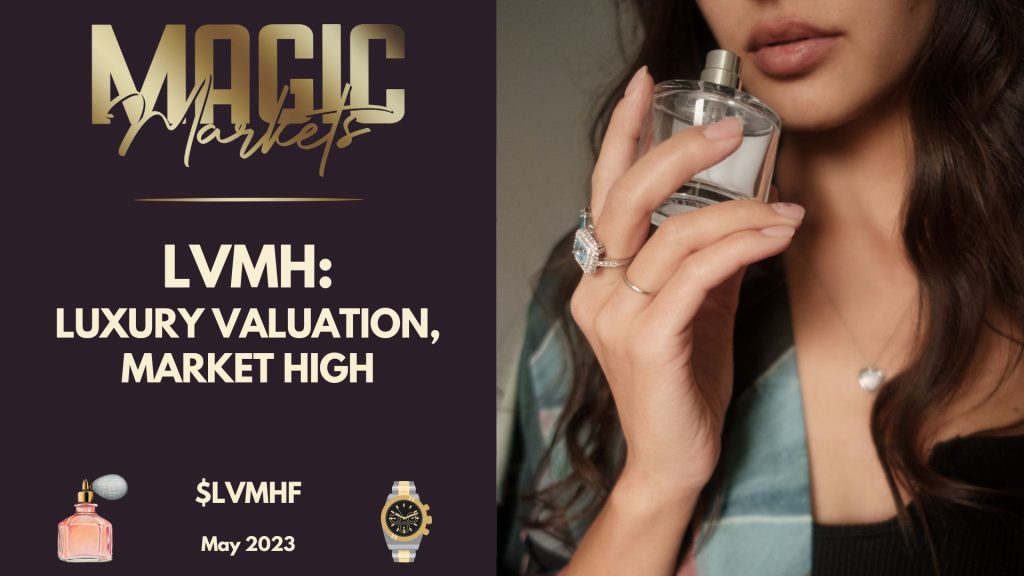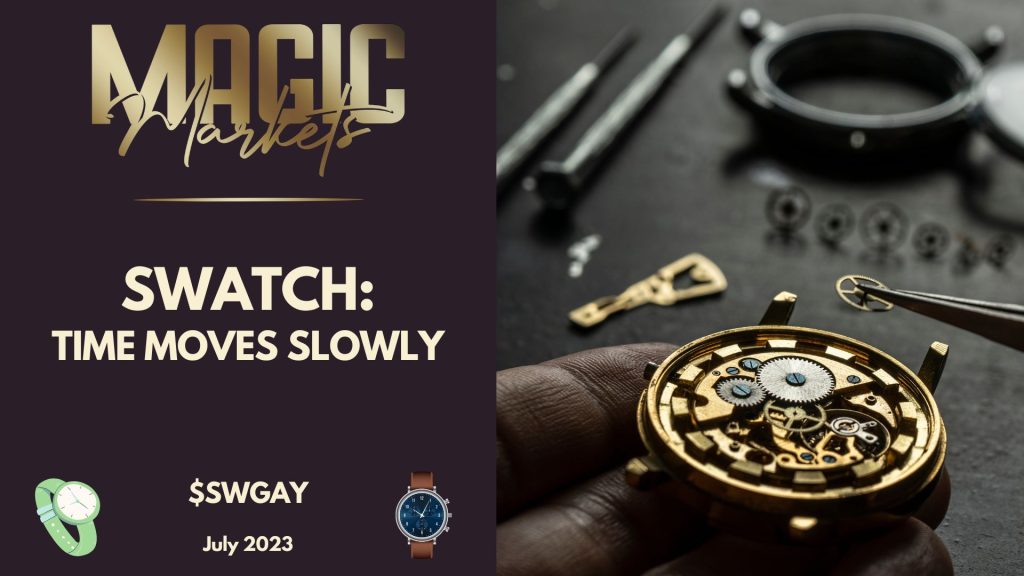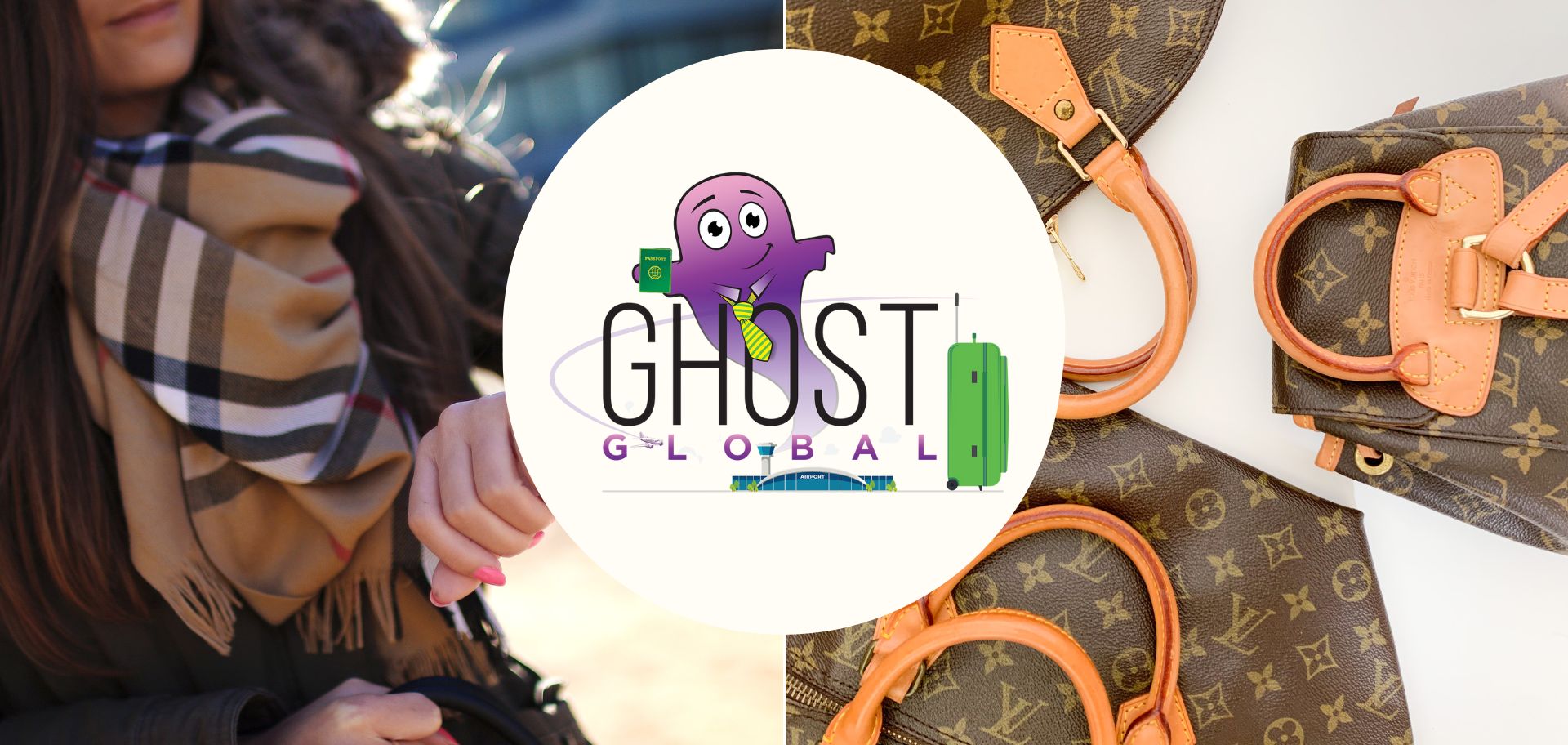It’s the old story, isn’t it? Would you rather own a Louis Vuitton bag, or Louis Vuitton shares?

If you bought Swatch shares 10 years ago instead of one of the watches, you would’ve been better off with the watch! There’s never a guarantee of success when it comes to investing.
As we discover in Magic Markets Premium this week, Swatch isn’t really a luxury goods company. Although it includes brands like Omega and Blancpain, Swatches themselves are far from luxurious and are facing disruption from smart watches and fitness watches.
The Louis Vuitton (or Richemont) products face no such disruptions from tech-enabled substitutes. This doesn’t mean that there are always customers available for the products though, evidenced by Richemont’s drop in revenue in the Americas in the latest update. That gave the share price a nasty knock of 9.5% on the day of the release.
How big is luxury?
Big. Very big. Depending on which reports you look at, the industry delivers annual revenue somewhere between $300 billion and $350 billion, with very juicy profit margins as well. This characteristic arises from the allure of exclusivity and the aspirational status associated with these coveted products. Brands within this realm often have long-standing traditions of craftsmanship, unparalleled attention to detail, and the use of the finest materials, creating an aura of unmatched prestige.
They also tend to write adverts that sound just like that paragraph.
Of course, it doesn’t hurt that the target audience for these ultra-luxe brands is the upper 0.01% of earners – in other words, the kind of folks who don’t get their feathers ruffled by silly things like recessions.
Economists and finance geeks call these Veblen Goods – products where demand increases as the price increases. In motoring, Ferrari is another good example.
Burberry, not BlackBerry
We’ve covered LVMH, Farfetch (the pure-play online luxury goods business) and Ferrari in Magic Markets Premium. We haven’t covered Burberry in detail yet, but we touch on the latest earnings here.
Burberry’s latest earnings report makes a lot of noise about a strong recovery in Mainland China. In the wake of a pandemic and on the heels of a global recession, the richest of the rich are back to swiping their black cards, resulting in a 46% rise in store sales in what was formerly Covid-19 ground zero.
The global expansion of a brand like Burberry, which carries a deeply ingrained association with the British elite, might appear paradoxical at first glance. Traditionally tied to British heritage, Burberry’s foray beyond the British Isles reflects a complex interplay of factors and strategic decisions that have driven its international success.
The allure of British heritage and the aristocratic connotations that Burberry embodies have a universal appeal. Across the world, there exists a fascination with British culture, history, and the sophistication associated with the British elite. The fact that Kate Middleton’s signature blowout (her hairstyle) is recognisable to people from South America to the UAE is nothing if not a testament to the reach of the royal family.
Burberry has capitalised on this fascination by leveraging its rich heritage to craft a powerful and aspirational brand identity that resonates with consumers far beyond the borders of the United Kingdom.
The fashion industry thrives on the concept of luxury and exclusivity. By expanding internationally, Burberry has embraced the opportunity to cater to a broader clientele, many of whom are drawn to the allure of owning a piece of British luxury. This strategy allows the brand to access new markets and tap into the spending power of consumers from diverse cultural backgrounds.
Burberry’s expansion is also a response to the evolving landscape of the global luxury market. As emerging economies have experienced rapid growth and an increase in affluent consumers, luxury brands have sought to establish a presence in these regions.
Remember, almost every economy has a rich top layer, even if the layers below are knee-deep in trying to afford food. The aspiration for prestigious and high-end products has become increasingly universal, creating a demand for renowned luxury brands like Burberry in the places you might least expect it.
The numbers
Here are a few financial highlights from Burberry’s latest quarter (Q1’24):
- Comparable group sales up 18% year-on-year, with Mainland China up 46%.
- In the most British thing ever, “heritage rainwear” was one of the fastest growing categories.
- Leather goods grew by 13%, trailing the growth in other categories.
The group has been targeting a high single-digit revenue CAGR (Compound Annual Growth Rate) off the FY20 base. To achieve that, they will need double-digit growth in FY24. So far, so good.
Where to from here for the industry? Probably only up
In our most recent report on luxury goods powerhouse LVMH, we deduced that the luxury industry is not only making strides in new territories but also breaking the age barrier when it comes to attracting consumers. This begs the question: with every generation becoming more socially conscious and spendthrift than the one before, will luxury survive yet another turn of the wheel?
According to research gathered by Bain, the Gen Z demographic is embracing luxury items at an astonishingly young age, splurging on these coveted products 3 to 5 years earlier than their Millennial predecessors. The trend starts as early as 15 years old, indicating a growing fascination with luxury goods among the younger generation.
This shift in behaviour can be partly attributed to the influence of social media and the ability to access brand messages and aspirational lifestyles with unprecedented ease. As a result, luxury brands have become more accessible and appealing to a wider audience, even those in their teenage years.
As the saying goes: there’s a millionaire born every minute. And it would appear that the luxury goods industry is standing at the ready to receive those #blessed dollars.
Stock picking needs deeper research
One thing that should never be considered a luxury is knowledge. Deep research into these companies is the only way to assess the investment quality of each business. Investment success is always a function of what you buy and what you pay for it.
With well over 80 research reports on global stocks available in the library, a subscription to Magic Markets Premium for just R99/month gives you access to an exceptional knowledge base that has been built since we launched in 2021. It may say Premium in the name, but that doesn’t mean you’ll pay a premium price!
There is no minimum monthly commitment and you can choose to access the reports in written or podcast format – whatever floats your boat. Sign up here and get ready to learn about global companies>>>




